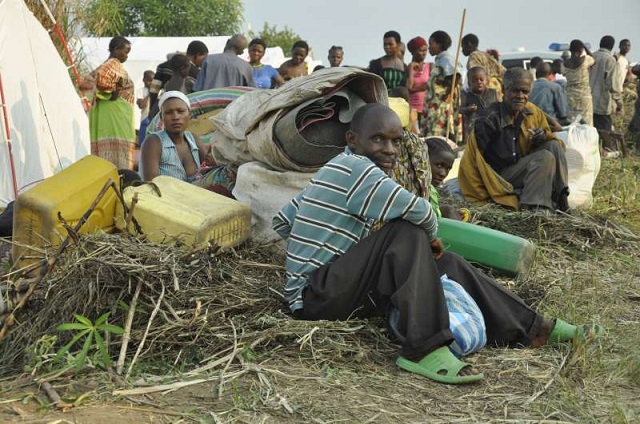
Kikuube, Uganda | THE INDEPENDENT | More than 50 Congolese refugees fleeing tribal clashes between the Lendu and the Bagegere in the Eastern DR Congo have crossed into Kikuube district.
The refugees crossed into the district through Lake Albert and landed at Sebigoro and Buhuka landing sites in Kabwoya and Kyangwali sub-counties respectively.
Vincent Alpha Opio, the Kikuube LC V vice-chairperson who doubles as the Kabwoya sub-county LC V councilor says that the Congolese crossed into the district between Sunday and Monday. They include men, women and children.
According to Opio, the Congolese are from the areas of Muvaramu, Joo, Kasenyi, Tchomia, Beni, Mboki in Bunia district, Ituri province in the Eastern part of the Democratic Republic of Congo.
He has tasked the Office of the Prime Minister and the United Nations High Commissioner for Refugees-UNHCR to immediately intervene fearing that the number of those crossing in the district could escalate due to the volatile situation in the DRC.
Thousands of Congolese refugees have flocked into Uganda since December 2017 following tribal clashes between the Lendu and Bagegere in Eastern DRC.
Currently, there is heightened security and health surveillance on Lake Albert shores in Bunyoro districts along the Uganda-DR Congo border following a surge in COVID-19 infections in the country.
There is heavy deployment of police, Uganda Peoples Defence Forces-UPDF soldiers and sister security agencies at most landing sites bordering DRC in the Albertine region.
The major deployment is at Sebigoro, Kaiso, Ndaiga, Butiaba, Bugoma, Kitebere, and Wanseko landing sites in Hoima, Kagadi, Kikuube and Buliisa districts respectively. The landing sites are the major entry points for Congolese nationals into the country.
The deployment and health surveillance are aimed at stopping the illegal entry of Congolese nationals into the country amidst the surge of COVID-19 infections.
*****
URN
 The Independent Uganda: You get the Truth we Pay the Price
The Independent Uganda: You get the Truth we Pay the Price


